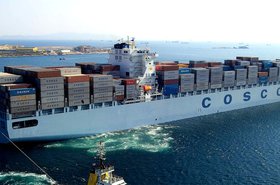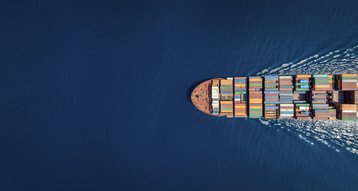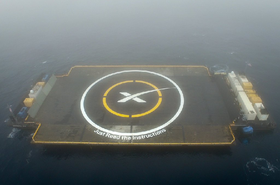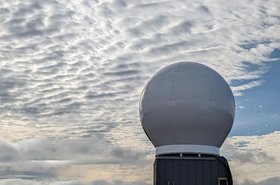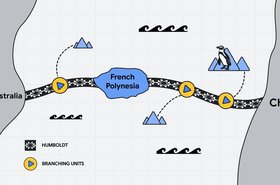Gone are the days of vessels plying the seas with nothing but Morse code or radio to keep them in touch with the world around them. A revolution in connectivity at sea followed the advent of maritime satellite services, from slow, expensive Inmarsat mini-M and Fleet services in the 1990s to the tremendous advances in mobile, affordable VSAT and now LEO services.
As a result, maritime operations are increasingly digital and connected, supporting vessel operations, communications, shipping, ports, logistics, and more. Ships are no longer on their own but mobile nodes and homes on a global network.
This digital transformation offers a tremendous array of benefits, including:
- Increased efficiency and cost savings
- IoT and big data analysis
- Real-time performance tracking and pre-emptive remote maintenance
- Improved safety and risk reduction
- Improved environmental sustainability
- Crew connectivity and welfare
- Telemedicine
- Training
At KVH, we are seeing a steady increase in data use and demand for bandwidth from commercial fleets, ship managers, and even leisure yachts that follow the path of terrestrial connectivity.
The scale of a modern connected vessel
A commercial vessel is perhaps one of the most heavily sensor-equipped platforms you'll encounter.
Consider that a container ship is the length of the Empire State Building (or more), moves at speeds of 20-30 mph, and has a carrying capacity equivalent to a 40+ mile freight train (or more than 18,000 20-foot shipping containers). These vessels may have crews of 20-30 people carrying out vessel operations and living aboard for months at a time, all surrounded by complex systems for propulsion, navigation, cargo monitoring and tracking, fuel management, habitation, and more.
At the same time, these floating warehouses/apartment buildings/offices/data centers require connections to the same advanced applications and services that we depend on in our offices, homes, and data centers on shore, not just for business functions but regulatory demands, crew and vessel safety, and more.
According to recent estimates, sensors, and systems throughout the ship generate more than 20GB of onboard sensor data per day. That data, however, does no good if it's locked away on a 200,000-ton ship for weeks or months. Likewise, that ship, its business, and its crew are at risk if they can't get the data – the weather and chart updates, vessel routing, port entry documentation, and news from home – that they need.
How to deliver reliable, enterprise-grade connectivity at sea
Over the past decade, we at KVH have seen a dramatic evolution in maritime connectivity. We've moved on from 250 Kbps services that cost $40 per MB to ultra-compact VSAT terminals with download speeds of 20 Mbps and $10 per GB costs, added-on 5G services with ultra-high speeds and low data costs in coastal waters (defined as up to 20+ miles from shore), and are now witnessing the emergence of disruptive new low earth orbit (LEO) services like Starlink and OneWeb that promise open data pipes with terrestrial-equivalent data speeds and data costs between $1 and $5 per GB.
There's no doubt that LEO services do offer significant benefits for mariners as part of a genuinely robust connectivity solution. While data pipes like Starlink are bright, shiny objects that garner a great deal of attention and afford fast, affordable crew connections, they haven't yet proven themselves the reliable, enterprise-grade communication and services solutions that vessels require.
VSAT and other services offer proven enterprise-grade tech, value-added services, and cybersecurity for optimal reliability and capabilities that go beyond a data pipe. Those existing technologies still have a role, whether for safety and regulatory compliance with services such as GMDSS, ECDIS, or other requirements.
That's why we and other solutions integrators believe that the future of maritime connectivity is hybrid. Starlink and other LEO services offer great benefits and potential, but they aren't the only option, just as VSAT, 5G, and WiFi aren't the only options.
Instead, these services can complement each other, especially when managed through an intelligent hybrid configuration.
Marine professionals have known this for years but didn't define their systems as "hybrid." Every time a technician installed VSAT, a cell booster, and an Iridium backup with least-cost routing onboard a ship, they were creating a multi-component hybrid solution.
But officers and crews at sea don't want to worry about how they are actually connecting to data, the internet, or their office networks. They simply want to grab their phone or tablet, hop onto the vessel's WiFi network and go. The question shouldn't be, "What service is best for me?" but rather, "How do I get the best connection at all times?"
It doesn't have to be an either/or decision when it comes to looking at the available services. There's a spectrum of connectivity on the tech, and fleets and ship managers must understand their needs and choose what to deploy.
The rise of integrated, intelligent hybrid connectivity delivers the outstanding communications that the modern connected ship and its digital native crews expect and demand.


